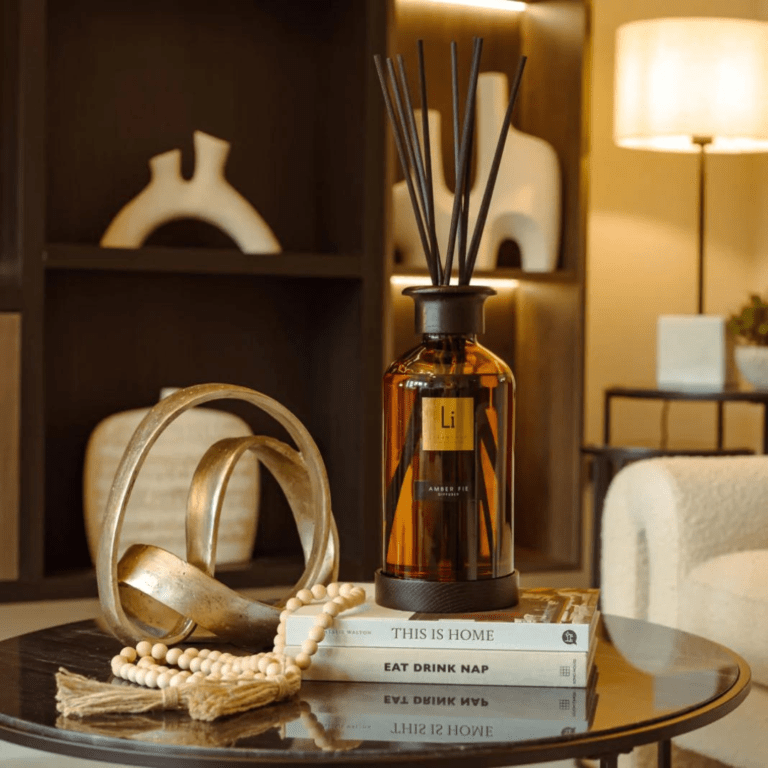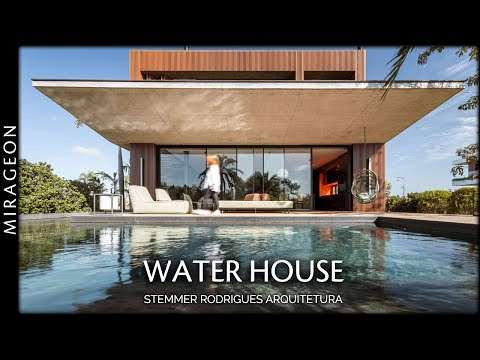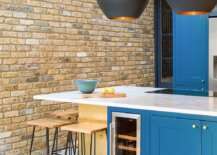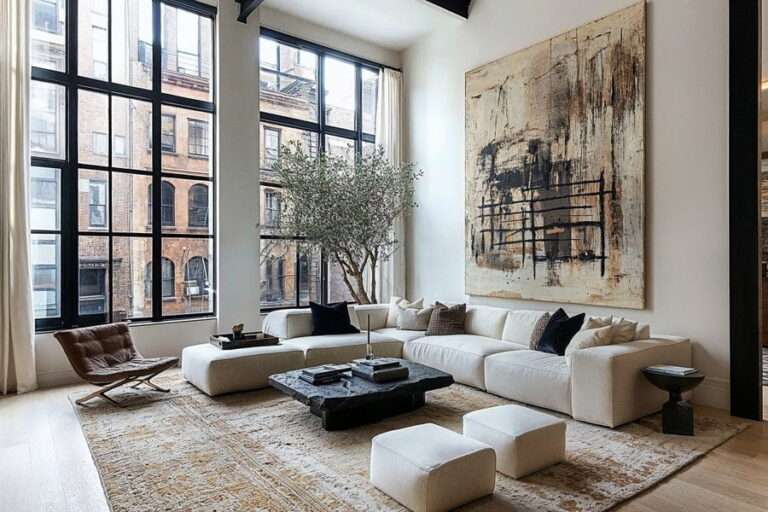The Cabin by Johnstone Callaghan Architects is a tiny eco home located in Abel Tasman National Park, on the South Island of New Zealand. Connected to nature and surrounded by wildlife, the tiny eco home is one of four privately held properties that is reachable only by boat or a walking track. As The Cabin is positioned among the trees, the architects limited tree cutting as much as possible so the owners could help regenerate the land. Additionally, due to the remote nature of the property, the owners have been given the rare opportunity to live amid nature itself.
When arriving at the site of the tiny eco home, the house tour begins at the bottom of the property. The house tour then takes you up a winding staircase that bypasses nature, so one is continuously connected to the natural surrounds. In the main living space of the tiny eco home, there is a kitchen with warm timber tones that complements the interior design, which is then contrasted by the dark timber tones found in the main bedroom. The remainder of the home leads out to the deck area, where a concrete bunker houses a sunken outdoor toilet. On the right side of The Cabin is a perched outdoor shower, allowing the owners to completely embrace outdoor living among the treetops.
Designed to be deceptively simple in structure, The Cabin is 37 square metres and features considered interior design and architectural moments. Furthermore, every curated element within the tiny eco home was designed to work in harmony with each other. Working with the clients to create bespoke design choices in the tiny echo home, Johnstone Callaghan Architects incorporates unique manual systems to open the property up further – through a custom pulley system that operates the external shutters. Johnstone Callaghan Architects has designed a cabin that disappears into the bush and allows the owners to feel connected to nature at all times and from every room in the tiny eco home.
00:00 – Introduction to the Tiny Eco Home
00:34 – The Remote South Island Location
01:38 – The Layout of the Tiny Eco Home
02:41 – The Cabin Structure and Features
03:17 – A Unique Outdoor Shower
03:37 – Bespoke Design Elements
04:48 – A Sensory Experience
For more from The Local Project:
Instagram – https://www.instagram.com/thelocalproject/
Website – https://thelocalproject.com.au/
Print Publication – https://thelocalproject.com.au/publication/
Hardcover Book – https://thelocalproject.com.au/book/
The Local Project Marketplace – https://thelocalproject.com.au/marketplace/
To subscribe to The Local Project’s Tri-Annual Print Publication see here – https://thelocalproject.com.au/subscribe/
Photography by Sam Hartnett.
Architecture and Interior Design by Johnstone Callaghan Architects.
Build by Ferguson Contracting.
Styling by Kate Johnstone.
Landscape by New Vision Landscapes.
Structural Engineering by Engco.
Joinery by Atkinson’s Innovative Interiors.
Filmed and Edited by Cadre.
Production by The Local Project.
Location: Abel Tasman National Park, New Zealand
The Local Project acknowledges Māori as tangata whenua and Treaty of Waitangi partners in Aotearoa New Zealand. We recognise the importance of Indigenous peoples in the identity of our respective countries and continuing connections to Country and community. We pay our respect to Elders, past and present, and extend that respect to all Indigenous people of these lands.
#TinyEcoHome #NewZealand #TreeHouse





